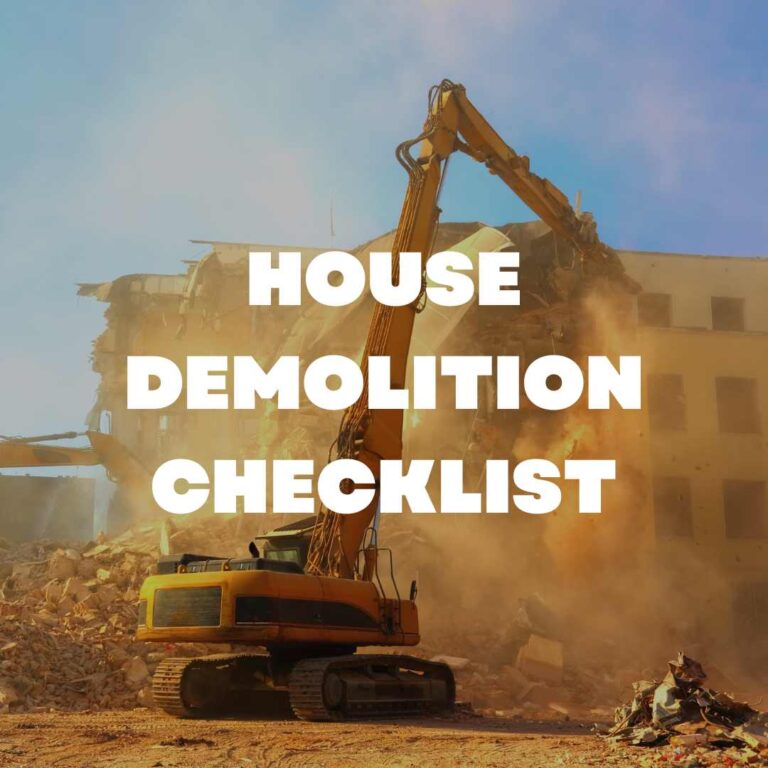In this all-inclusive guide, we aim to shed light on the modern approach to construction, which is not just eco-friendly but also cost-efficient. So, buckle up as we embark on this green journey together.
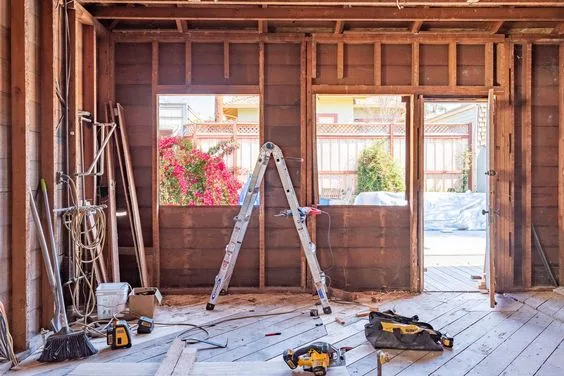
Table of Contents
ToggleA Modern Approach to Construction
When we talk about construction, it’s essential to look at the entire lifecycle of a building, and that includes the end of its life. Traditionally, when a building is demolished, it often ends up as a pile of waste in a landfill. But in a world where we’re now more conscious of our environmental footprint, that model simply doesn’t cut it anymore.
Here’s where sustainable house demolitions step in, acting as a modern approach that addresses these environmental concerns head-on. It’s like taking the age-old wisdom of “one man’s trash is another man’s treasure” and applying it to the building industry. Rather than creating waste, sustainable house demolition looks at the end of a building’s life as an opportunity to recover valuable resources. By carefully deconstructing a building, we can salvage usable materials and repurpose them into new construction projects.
The Current Scenario: Construction Waste and Its Impact
We’ve all seen those gigantic heaps of debris after a house demolition, haven’t we? It’s not just an eyesore, but it’s also a considerable strain on our environment. Traditional demolition and construction activities account for approximately 40% of Australia’s total waste. That’s a whopping 29 million tonnes a year. It’s a hefty price that our beautiful Brisbane pays. This waste includes various materials, from concrete, bricks, and plasterboard to metals, timber, glass, plastics, carpet, vegetation, rocks, soil, and sand. And this can leave a huge impact on the environment.
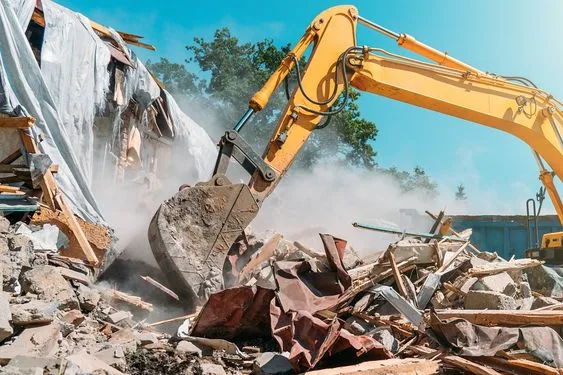
Shifting Paradigm
You might be thinking, “It’s a problem, sure. But what’s the solution?” Enter sustainable house demolition – the game-changer Brisbane has been waiting for. It’s a revolutionary concept involving demolition practices that aim to drastically cut down on the waste produced during a house demolition. And it’s not just about waste reduction. It also focuses on proper waste disposal and a solid waste management plan — smart reuse and recycling of materials, ensuring that the demolition debris turns from a liability into an asset.
The Environmental Impact of Traditional Construction Waste
Construction waste doesn’t just fill up landfills; it also significantly contributes to air and water pollution. This extraction and processing of raw materials for new construction take a toll on our natural resources, causing environmental imbalances. Sustainable house demolition can help alleviate these environmental concerns by reducing the extraction of raw materials and decreasing the amount of waste ending up in landfills.
Planning for Sustainable House Demolition
When it comes to demolishing a house, there are ways to do it that are more sustainable than others. By planning for sustainable house demolition, you can reduce the environmental impact of the process and even save money in the long run. Here are some things to consider:
Comprehensive Assessment
Before you start demolishing your house, it’s important to conduct a comprehensive assessment to determine the best course of action. One key step is confirming whether you need a demolition license in Queensland, as licensing is required for certain types of demolition work to ensure safety and compliance.
This assessment should take into account the condition of the house, the materials that were used in its construction, and any potential hazards such as asbestos or lead paint. By conducting a comprehensive assessment, you can identify any potential issues and plan for them accordingly.
Material Reuse Plan
One of the most sustainable practises when it comes to house demolition is to reuse as many materials as possible. This can include everything from salvaging timber and bricks to recycling metal and concrete. By creating a material reuse plan, you can identify which materials can be salvaged and reused, and which materials will need to be disposed of.
Waste Management Strategy
Even with a material reuse plan in place, there will still be types of waste that need to be disposed of. By creating a waste management plan, you can ensure that this solid waste is disposed of in the most sustainable way possible. This can include everything from recycling to composting to using landfill diversion programs.
Overall, planning for sustainable house demolition is an important step in reducing the environmental impact of the process. By conducting a comprehensive assessment, creating a material reuse plan, and implementing a waste management strategy, you can ensure that your house demolition is as sustainable as possible.
Deconstruction vs Demolition
Traditionally, demolition is the faster method where the entire building is quickly razed, often with heavy machinery such as bulldozers and excavators. It’s essentially about destroying the structure and then carting away the debris for disposal, which often ends up in landfills. While this may be efficient in terms of time, it’s not always the friendliest option for our environment.
On the other hand, deconstruction is a more meticulous process. Instead of a complete teardown, a house is systematically disassembled, often largely by hand. This mindful approach allows valuable materials to be salvaged, recycled, or reused, significantly reducing waste. Think of it like a jigsaw puzzle, where each piece is carefully removed and sorted for future use.
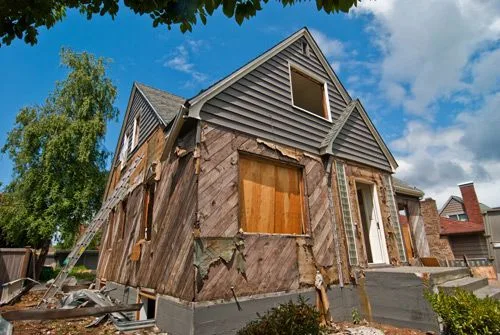
While deconstruction may take more time than traditional demolition, the environmental and even economic benefits can far outweigh the extra labour involved. Not only does it reduce the volume of waste destined for landfill, but it also offers the opportunity to reclaim and reuse high-quality materials. In the end, you’re left with a treasure trove of resources ready for your next life in your new sustainable construction project.
Your choice between deconstruction and demolition in sustainable house demolitions represents the choice between a quick but potentially wasteful process and a slower, more considerate method that honours the value of materials and respects our environment. As more Australians adopt greener practices, the trend is certainly leaning towards the latter. After all, every step towards sustainability counts!
Practical Steps on Implementing Sustainable Demolition
When it comes to demolishing a house, it’s important to do it in a way that is environmentally responsible. Sustainable house demolition is a process that involves the careful deconstruction of a building construction with the goal of minimizing types of waste and maximizing the reuse of building components. Here are some key things to keep in mind when it comes to sustainable house demolition:
1. Salvage and Reuse Materials
One of the main principles of sustainable house demolition is to salvage and reuse as many building components as possible. This includes everything from the timber and bricks to the plumbing fixtures and electrical wiring. By salvaging these raw materials, you can reduce the amount of solid waste that ends up in landfills and also save money on new building materials.
2. Use Green Demolition Techniques
Green demolition techniques are those that prioritize the environment and public health during the demolition process. This can include using methods that minimise dust and debris on the construction site, as well as those that reduce noise pollution. By using these techniques, you can minimise the impact of the demolition on the surrounding community.
3. Properly Dispose of Hazardous Materials
When demolishing a house, it’s important to properly dispose of any hazardous materials that may be present. This can include things like asbestos, lead paint, and mould. These materials can be harmful to both the environment and human health if not disposed of properly.
4. Consider Deconstruction Instead of Demolition
Deconstruction is a process that involves carefully dismantling a building with the goal of salvaging and reusing as many materials as possible. This can be a more time-consuming process than traditional demolition, but it can also be more environmentally friendly and cost-effective in the long run.
By following these principles and techniques, you can help ensure that your house demolition is done in a way that is environmentally responsible and sustainable.
The Three Pillars of Sustainable House Demolition: Reduce, Reuse, Recycle
Reducing Waste: The Advantages of Smart Design
First off, less is more. This old adage couldn’t ring more true for sustainable house demolitions. By implementing a smart design, we can drastically cut down on the amount of waste generated during demolition. Your current home may not be equipped and may even have a lot of unwanted items waiting for their new homes… but you can think about incorporating smart design in your next home. Below are a few examples that you can incorporate in your next construction to ensure a greener and easier demolition:
- Modular Construction: This design approach allows buildings and structures to be constructed in pieces (modules), which can be easily dismantled, moved, and reused. This not only minimizes waste during demolition but also during the construction phase.
- Selection of Durable Materials: The use of high-quality, durable materials extends the lifespan of building components and reduces the frequency of replacement, thus minimizing waste.
- Deconstruction-Friendly Design: This involves designing structures that are easy to deconstruct. For example, using screws instead of nails or adhesives, or designing joints that can be easily disassembled.
- Space Flexibility: Designing spaces that can be easily modified for different uses can reduce the need for demolition or extensive remodeling.
- Easily Accessible Components: Designing buildings so that components like plumbing and wiring are easily accessible can reduce the need to break down walls or structures when repairs or modifications are needed.
By incorporating these elements of smart design into the construction and demolition works, we can make significant strides in reducing waste and promoting sustainability.
The Power of Reuse: Salvaging Building Materials
“Out with the old, in with the new”, doesn’t always have to be the case. With a bit of innovation, old building materials can find new life. For instance, old bricks, timber, and even fixtures like windows and doors can be repurposed. Salvaging building materials not only reduces waste but also adds a touch of charm and character to new constructions.
Most demolition companies tend to use heavy machinery to crush materials, before proceeding to haul them off. However, if your house contains high-quality reusable materials — think timber flooring, heritage bricks, or architectural features with a touch of history — it’s absolutely worthwhile to explore other options.
There are demolition companies that make an effort to deconstruct and recycle as much materials as possible. Yes, this process may be more time-consuming, but the payoff is a dramatic reduction in waste. You see, it’s all about striking a balance between efficiency and environmental responsibility in the world of sustainable house demolition.
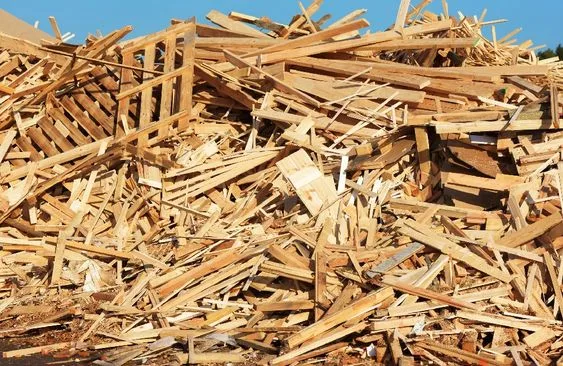
Recycling: Turning Waste into Valuable Resources
Last but not least, sustainable house demolition involves recycling materials that cannot be reused. Incorporating recycled or reclaimed materials in the design helps to reduce demand for new materials and also gives a second life to existing materials.
Governments worldwide are stepping up their efforts to mitigate the logistic and environmental pressure created by large volumes of construction and demolition waste. The National Waste Policy in Australia serves as a prominent example of this shift.
By choosing deconstruction over conventional demolition, you have the opportunity to recycle a broad range of materials. This list includes but isn’t limited to, metal, glass, plastic, plasterboard, timber, bricks, concrete, and reusable household fixtures and fittings.
Crushed concrete can serve as a fantastic base for roads, and metals like steel can be melted down and reused. All it takes is a bit of out-of-the-box thinking to transform waste into valuable resources.
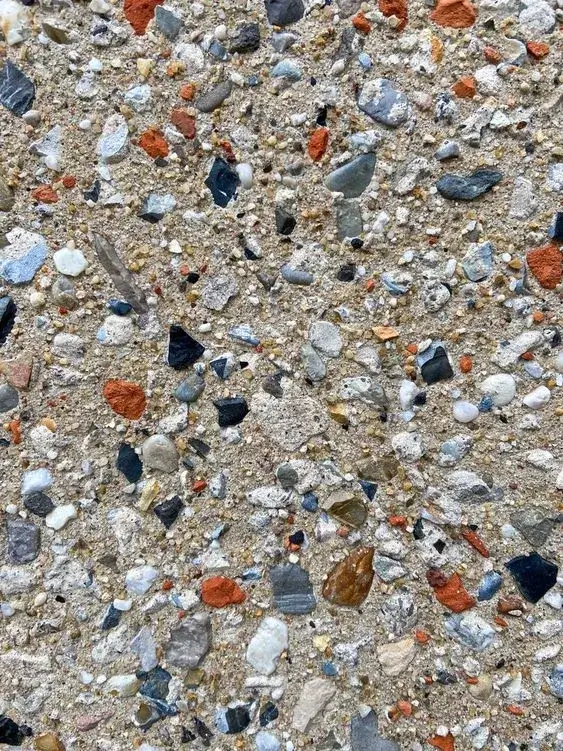
Bonus Tip: The Art of Upcycling
Design for Upcycling: Some designs take into account the potential future uses of materials once they’re no longer needed in their current form. This approach is known as “design for upcycling”.
Upcycling, also known as creative reuse, is a unique and sustainable way to breathe new life into materials that might otherwise be destined for the landfill. So, how do you upcycle materials from a demolished house in Australia, you ask? Well, it’s all about seeing the potential in the old and transforming it into something valuable, often with a new and exciting purpose.
For instance, reclaimed timber can be given a new lease of life as beautiful and rustic furniture pieces – think bespoke tables, chairs, and bookcases that carry a story from their previous life. Similarly, old bricks, once cleaned up, can be used to create stunning feature walls, and garden paths, or even used in outdoor landscaping projects.
But it doesn’t stop there! Those old metal fixtures and fittings can be polished up and incorporated into industrial-style interior designs. Even the shattered glass can be melted down and reshaped into impressive decorative items or beautiful stained glass windows.
For the more adventurous, you can repurpose old doors into stylish headboards, transform wooden floorboards into striking wall panelling, or even convert old bathtubs into quirky garden planters.
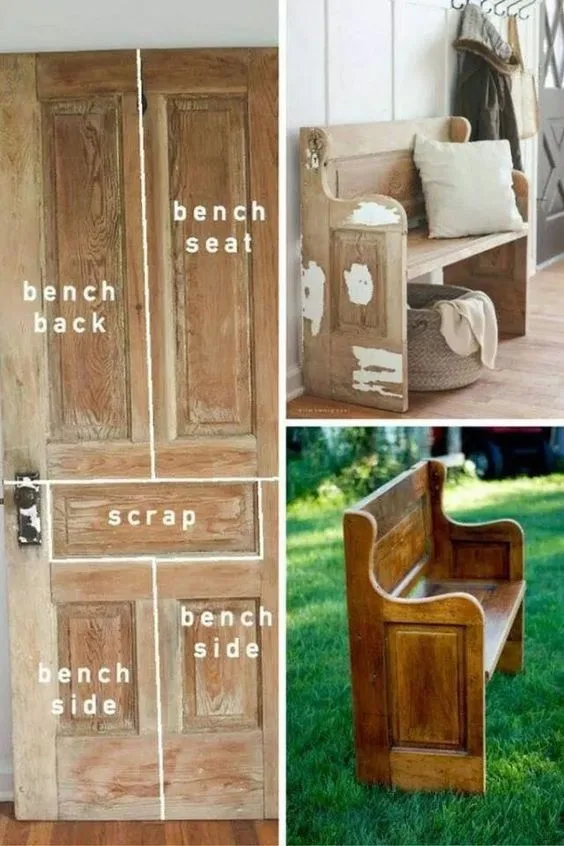
The key here is to think outside the box and get creative. Upcycling is not just about recycling; it’s about adding value through creativity and design. Not only is this beneficial for the environment, but it’s also a brilliant way to infuse unique and personal touches into your space. After all, there’s something truly special about knowing the materials in your home carry a history and a story of their own.
In the world of sustainable house demolition in Australia, the opportunity for upcycling is vast, making each demolition project a thrilling treasure hunt. It’s all part of the adventure in the quest for sustainability and conscious living.
Economic and Environmental Advantages
Saves Money
No, we’re not pulling your leg. While sustainable demolition might sound like a pricey endeavor, it’s quite the opposite. By salvaging and selling valuable materials, you can offset the cost of demolition.
You would be surprised at the amount of money you can raise just by allocating time to sell and rehome some of your household items. Even wood and metal scraps can be sold. Plus, by reducing landfill waste, you can also save on landfill levies. So it’s not just a win for the environment, but for your wallet too!
Reduces Landfill Loads
Each tonne of waste diverted from landfills is a victory for Mother Nature. It results in less soil, water, and air pollution, conserves natural resources, and curbs greenhouse gas emissions. Brisbane’s been taking strides in sustainable practices, and every sustainable house demolition contributes to this green revolution.
Practicing sustainable demolition helps in minimising waste to landfill. Even just the initial step of you researching and reading about how you can incorporate these eco-friendly options is already a win for Mother Nature!
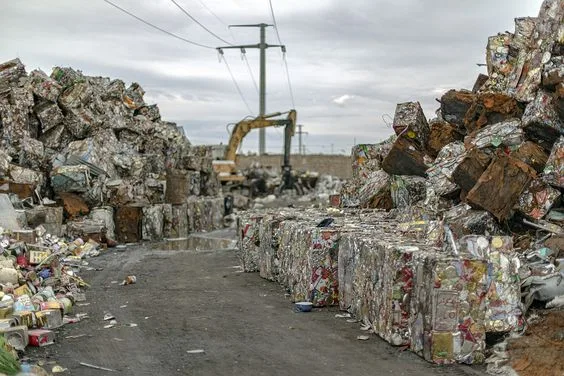
The Role of Landfill Levies
The government has hopped onto the green bandwagon too, with landfill levies acting as an incentive for more sustainable practices. The higher the levy, the more cost-effective sustainable house demolition becomes. It’s a nudge towards a greener Brisbane and a brighter future for us all.
Practical Tips and Advice
Finding the Right Sustainable Demolition Contractor in Brisbane
Picking a contractor is no easy feat; it’s more than just eeny, meeny, miny, or moe. You need someone with the right credentials, knowledge, and experience. Look for a contractor who prioritises sustainable practices, knows the ins and outs of material salvage, and can guide you through the green demolition process. Pro House Demolitions Brisbane is a reliable house demolition contractor in this field, delivering top-notch, eco-friendly demolition services.
Designing for Easy and Sustainable Demolition
In the spirit of putting the cart before the horse, thinking about demolition during the design phase can save you a ton of hassle down the line. Opting for a deconstructable design or modular construction means your home can be easily taken apart when the time comes, reducing waste, and making material salvage a breeze. Talk about a win-win!
Essential Questions for Your Sustainable House Demolition Project
Jumping into a sustainable house demolition project can be a huge endeavor. Before you dive headfirst into your sustainable house demolition project, there are a few questions you need to ask. Being well-prepared and asking the right questions can make all the difference. Here are some questions to keep in mind:
- What’s the Scope of Salvageable and Recyclable Materials? The first step towards a successful sustainable house demolition is understanding what you have to work with. A detailed inventory of your building’s components will help identify what can be salvaged or recycled. This could include timber, bricks, windows, or any other valuable materials.
- What’s the Plan for Non-Recyclable Waste? Despite our best efforts, not everything in a house can be recycled or reused. So, what’s the plan for this waste? You’ll need a strategy for responsibly disposing of any non-recyclable materials.
- What’s the Environmental Impact? This is where your commitment to sustainability truly shines! Ask about the expected energy use, emissions, and overall environmental footprint of the demolition process. Are there ways to lessen the impact further?
- How Can We Minimize Disruption? Demolition projects can be noisy and disruptive for nearby residents. So, what measures will be taken to minimize this? You’ll want to keep the peace with your neighbours while your house is being taken down.
- What’s the Timeline? Sustainable house demolitions can take a bit more time than traditional methods due to the careful deconstruction involved. A realistic timeline can help you plan and manage expectations better.
By asking these key questions, you’re ensuring a more comprehensive and holistic approach to your sustainable house demolition project. After all, it’s not just about tearing down a structure – it’s about paving the way for a greener future, one brick at a time.
Strategies for Minimising Waste
Remember, the ultimate goal here is to minimise waste. Strategies such as deconstructing instead of demolishing, sorting materials onsite, and using green disposal methods can significantly reduce the amount of waste produced. It’s all about making little changes that add up to a big environmental impact.
Envisioning the Future of Sustainable House Demolition
Regulatory Incentives and Policies
As we look to the future, sustainable house demolition will become increasingly important. Policymakers are recognising this, introducing incentives and regulations that promote greener practices. Whether it’s through landfill levies or green building certifications, it’s clear that sustainable house demolition is the way forward.
A Green Step Forward in the Construction Industry
Sustainable house demolition is more than a trend; it’s a major step forward in the construction industry. By reducing waste, conserving resources, and promoting recycling, we’re not only saving money but also protecting our planet. It’s a testament to how far we’ve come and a preview of the exciting, green developments still to come.
Post-Demolition practises
After the demolition of a building construction, there are several practises that can be implemented to ensure that the process is sustainable and environmentally friendly. In this section, we will discuss two important practises: Material Recycling and Site Restoration.
Material Recycling
One of the most important post-demolition practises is material recycling. Instead of sending all the debris to a landfill, you can recycle some of the materials. Recycling reduces the amount of waste and conserves natural resources. It also reduces the carbon footprint of the demolition process.
You can recycle many materials from the demolished building, including:
- Concrete
- Brick
- Metal
- Wood
- Glass
Recycling these materials can be done in several ways. For example, concrete and brick can be crushed and used as aggregate for new construction projects. Metal can be melted down and reused in new products. Wood can be chipped and used as mulch or fuel. Glass can be melted down and used to make new glass products.
Site Restoration
Site restoration is another essential post-demolition practise. After the demolition, the site needs to be restored to its original state or repurposed for a new use. Site restoration involves removing debris, grading the site, and planting vegetation.
The restoration process should be done in an environmentally friendly way. For example, you can use native plants for landscaping to support local ecosystems. You can also use permeable surfaces for parking lots and walkways to reduce runoff and promote groundwater recharge.
In addition to restoring the site, you can also repurpose the land for a new sustainable building project. For example, you can build a green building that uses renewable energy sources, such as solar panels and wind turbines. You can also use sustainable building materials, such as bamboo and recycled steel.
In conclusion, material recycling and site restoration are two essential post-demolition practises that can make the demolition process more sustainable and environmentally friendly. By recycling materials and restoring the site in an eco-friendly way, you can reduce waste, conserve natural resources, and support local ecosystems.
Case Studies of Sustainable House Demolition
If you’re looking for inspiration on how to demolish a house sustainably, here are some case studies that showcase different approaches:
Case Study 1: Deconstruction and Material Salvage
In this case study, the homeowner wanted to demolish their house to build a new one. However, instead of using traditional demolition methods, they opted for deconstruction and material salvage. This involved carefully dismantling the house and salvaging reusable materials such as timber, windows, and doors. These materials were then donated to a local nonprofit organization that helps build affordable housing for low-income families. By salvaging these materials, the homeowner was able to divert waste from the landfill and contribute to a good cause.
Case Study 2: Selective Demolition and Recycling
In this case study, the homeowner wanted to demolish a portion of their house to make room for an addition. Instead of demolishing the entire house, they opted for selective demolition. This involved carefully removing only the portion of the house that needed to be demolished, while leaving the rest of the house intact. The materials that were removed were then sorted and recycled.
For example, wood was chipped into mulch, concrete was crushed into aggregate, and metals were melted down and reused. By opting for selective demolition and recycling, the homeowner was able to minimise waste and reduce the environmental impact of the project.
Case Study 3: Deconstruction and Reuse
In this case study, the homeowner wanted to demolish their house to build a new one. However, instead of using traditional demolition methods, they opted for deconstruction and reuse. This involved carefully dismantling the house and salvaging reusable materials such as timber, windows, and doors. These materials were then repurposed in the new construction project.
For example, the timber was used to build framing for the new house, and the windows and doors were used as-is. By reusing these materials, the homeowner was able to reduce waste and save money on new materials.
These case studies demonstrate that there are many ways to demolish a house sustainably. By considering deconstruction, material salvage, selective demolition, recycling, and reuse, you can reduce waste, minimise environmental impact, and even contribute to a good cause.
What’s Next?
The green construction wave is just beginning, and sustainable house demolition is leading the charge. As we continue to innovate and adopt sustainable practices, we can look forward to a future where construction and demolition waste is minimal, resources are used efficiently, and the environmental impact of building is dramatically reduced.
This future is possible, and it starts with you. By choosing sustainable house demolition, you’re playing a crucial role in making this green vision a reality. Remember, your choice matters. Opt for a sustainable house demolition and help us pave the way to a greener future! If you’re ready to get started with your demolition journey, make sure to check out our Demolition Checklist for a fool-proof guide to getting it right the first time.
FAQs
What is sustainable house demolition?
Sustainable house demolition is an environmentally friendly approach to tearing down buildings. It prioritizes the reduction of waste, the reuse of materials, and the recycling of eligible components, minimizing the environmental impact and promoting sustainability.
How is sustainable house demolition different from traditional demolition?
Traditional demolition often involves a wrecking ball approach, where the building is quickly destroyed and the debris sent to a landfill. On the other hand, sustainable house demolition is more of a disassembly process, where buildings are carefully taken apart to salvage as much material as possible for reuse and recycling.
Is sustainable house demolition more expensive than regular demolition?
While the upfront costs can be higher due to the labour-intensive process of deconstruction, the cost savings from salvaging and recycling materials can offset these expenses. Additionally, you may be eligible for green building incentives or tax breaks, which can further reduce the cost.
What materials can be salvaged or recycled in a sustainable house demolition?
Many components of a building can be salvaged or recycled during a sustainable demolition, including bricks, timber, metals, glass, concrete, and certain types of insulation and flooring. These materials can be reused in new construction projects or recycled into new products.
How can I find a sustainable house demolition contractor in Brisbane?
Look for a contractor who is committed to green practices and has experience in sustainable demolition. Pro House Demolitions Brisbane is a leading provider of sustainable house demolition services, with a proven track record of minimising waste and maximising material salvage.
What are the environmental benefits of sustainable house demolition?
Sustainable house demolition significantly reduces the amount of waste sent to landfills, conserves natural resources by promoting the reuse and recycling of materials, and reduces greenhouse gas emissions associated with the extraction and processing of virgin materials. It’s a crucial component of the green building movement.
What are some environmentally friendly construction techniques?
There are many environmentally friendly construction techniques that can be used to reduce the impact of building on the environment. Some of these techniques include using sustainable materials, minimizing waste, and incorporating energy-efficient systems. For example, using recycled materials such as reclaimed wood or recycled steel can reduce the amount of waste generated during construction. Additionally, designing buildings to maximise natural light and ventilation can reduce the need for artificial lighting and air conditioning.
How can architects incorporate sustainable techniques into their designs?
Architects can incorporate sustainable techniques into their designs by considering the environmental impact of their choices throughout the design process. This includes selecting sustainable materials, designing for energy efficiency, and incorporating water conservation measures. Additionally, architects can work with builders and contractors to ensure that sustainable practises are implemented during construction.



